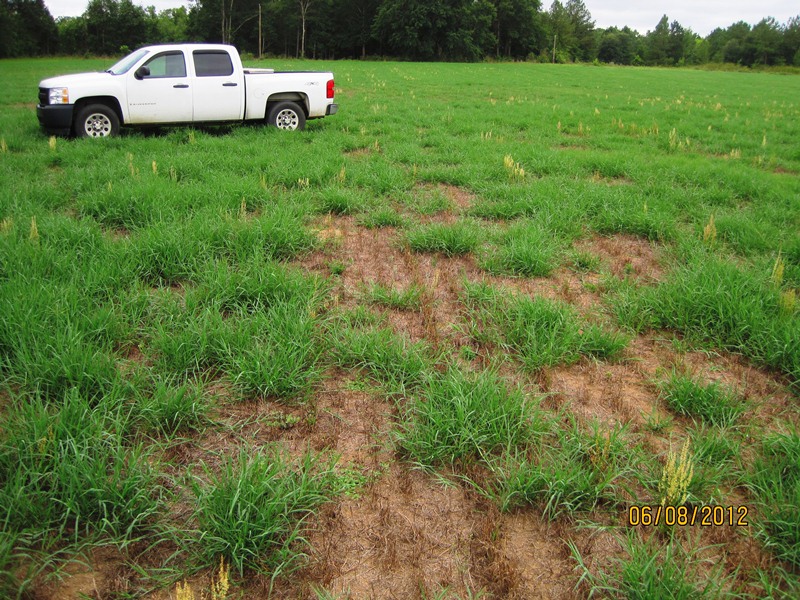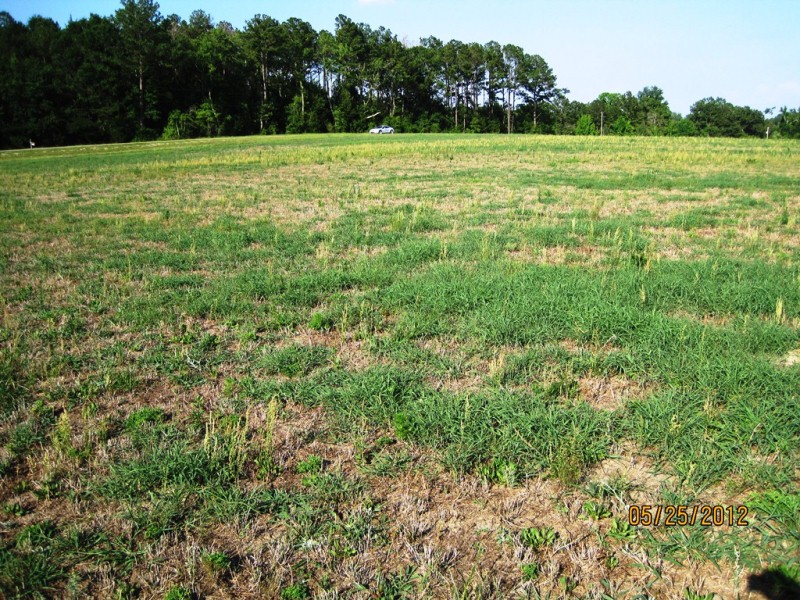Over the last several months, reports of stand losses and decline for both Bermuda and Bahia grass pastures and hay fields have been coming in to Extension Offices across the Southeast. Some ranchers have lost 25%-40% of their stand in certain fields, while a few have lost 70-90%. Most accounts are similar; the grass, that seemed healthy last fall, never greened up this spring. County Agents in North Florida have been working with Dr. Ann Blount, UF Forage Breeder, and Dr. Cheryl Mackowiak, UF Soil Specialist, to determine the cause of the decline. Forage, soil, and nematode samples have been collected and sent to University of Florida labs for analyses.
To date, there are no definitive answers, but the theory is that multiple stressors made the grassses susceptible to decline. While each case varies with pasture use and management and use of the pastures, there are some similarities. All of the fields have experienced fairly severe drought stress over the past two years. Most producers report having a 33-50% yield loss due to drought in the previous year. In addition, fungal diseases such as Bipolaris, Take-All, Pythium Crown & Root Rot, Dollar Spot, and Brown Patch have been detected in the fields. These fungal diseases are commonly present in fields, but this year problems were especially notieable, likely because of the mild weather this past winter. Cool, damp weather kept the fungi growing for a longer period of time. Some of the fields had potassium deficiencies that also weakened Bermudagrass hay fields, especially Tifton 85. Ground pearls, insects that feed on grass roots, have also been found in some of the problem fields. Some of the pastures with losses were also over-seeded with winter forages such as ryegrass and clover. At this point it appears that multiple stresses, a “Perfect Storm” is the cause of much of the decline we have been observing. Droughtover these past two years certainly was the largest stressor, but the fungal diseases, insects, and competition from winter crops added even more stress and the weaker plants did not survive the winter.
Extension Agents and Forage Specialsits in the Southeastern States are developing a data base of effected fields to establish possible lab tests results and management practices that are held in common. We hope to develop an understanding of the causes, so we can develop better management strategies for the future. If you have a hay field or pasture with significant brown patches of dead or dying grass, contact your County Agent. The more historic and current information we can gather on problem fields, the greater our chances of identifying causative agents. Hopefully then, we can develop stratigies to prevent or reduce future losses.


